Throwback Thursday: The Universe’s Fate
For destruction, ice is also great, and will suffice.
“Some say the world will end in fire,
Some say in ice.
From what I’ve tasted of desire
I hold with those who favor fire.
But if it had to perish twice,
I think I know enough of hate
To say that for destruction ice
Is also great
And would suffice.” –Robert Frost
Depending on where you are in the world right now, you might really be feeling the effects of the emerging winter, as cold snaps, freezes and snowstorms take hold across the northern hemisphere.
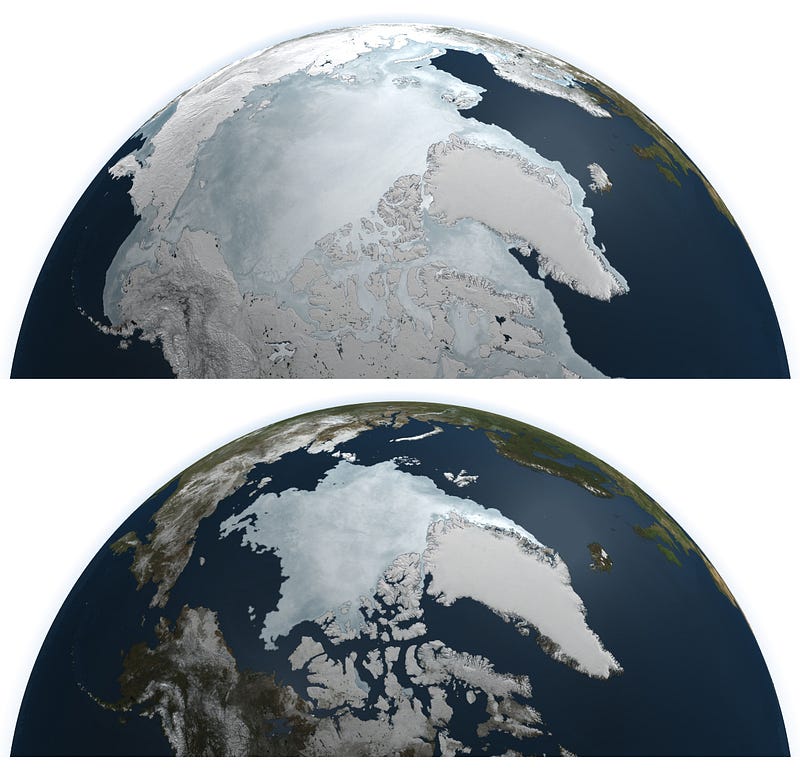
But we can all be pretty sure that this is temporary, and that the spring is just a few short months away. It’s not like it’s just going to get colder and colder until everything asymptotes towards absolute zero, right?
…right?
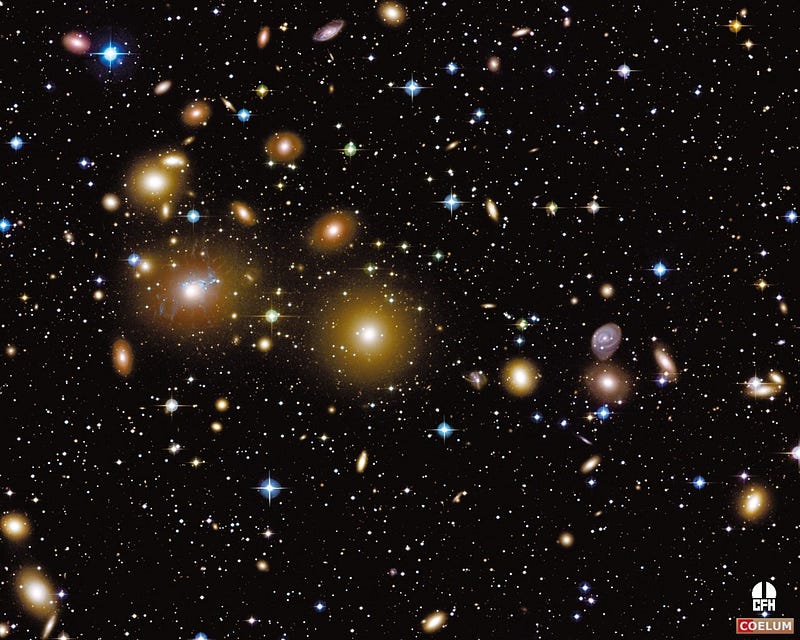
Of course it will; our planet is only getting colder (in the north) because of our tilt away from the Sun. Over the next few months, we’ll start tilting back towards it again, and with the increased, more direct sunlight, warmer temperatures will ensue.
But the Universe itself isn’t so lucky. What seems absurd when applied to Earth is not only a legitimate consideration when it comes to the Universe, it’s literally the ultimate question: what is the fate of the Universe?
In order to understand why this is a legitimate thing to consider, you have to go all the way back to the question of where we came from in order to get here.
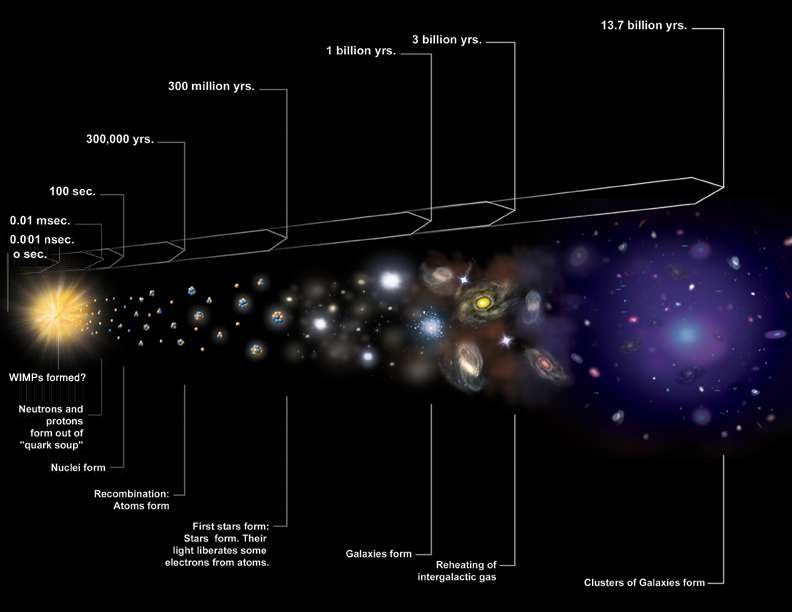
That would be from the Big Bang, of course, which tells us that what we know as our Universe — complete with all the matter and radiation in it — started out from a hot, dense, expanding phase, and has been cooling, becoming less dense, and the expansion rate has been slowing down ever since.
I want you to pause for a moment, and recognize how remarkable this part of the story truly is.
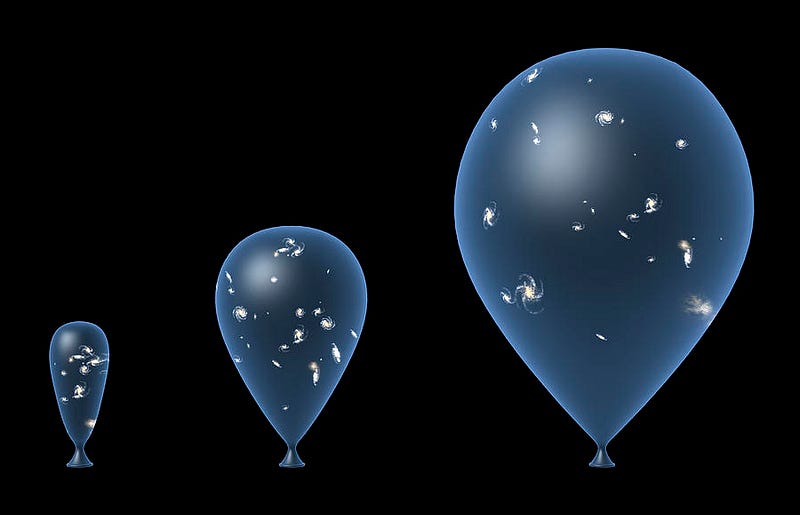
When you hear, “the Universe is expanding,” you might get a certain picture in your head. Maybe it’s of galaxies attached to the surface of a balloon that’s being blown up; maybe it’s of raisins being baked inside a loaf of bread; maybe it’s a soap bubble with air pumped into it, or maybe something different entirely.
I’m well aware that none of these are completely satisfactory, because they’re simply analogies for the mathematical framework of general relativity. Without going into the math, there are two things that determine how the Universe expands:
- All the different forms of energy density (including normal matter, dark matter, dark energy, neutrinos, photons, cosmic strings, domain walls, magnetic monopoles, and anything else you can dream up) present in the Universe at any given time, and
- What the actual, physical expansion rate happens to be at that particular time.
When I say “how the Universe expands,” I mean, “how the expansion properties of the Universe evolve over time.”
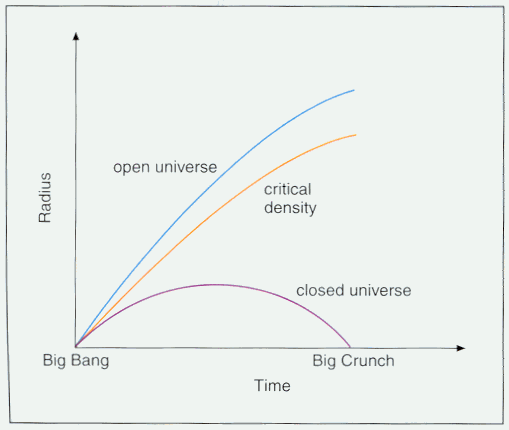
There are, naively, three simple possibilities. And by simple, I mean Goldilocks-and-the-three-bears simple. Let me explain: as the Universe continues to expand, the total number of particles in it remains the same, but the volume continues to increase, meaning that the energy density drops, and since the expansion rate depends on the energy density, it drops, too. So based on that, here are the three (naive) possibilities.
- This Universe expands too slow. If the expansion rate at any time is below a certain critical value (determined by the energy density), it will drop to zero in a finite amount of time. Since gravity still exists, we’d then enter a phase of contraction (instead of expansion), and the Universe recollapses on itself in a Big Crunch. This would be the “fire” scenario, as the leftover radiation from the Big Bang would heat back up and fry everything in existence at the end.
- This Universe expands too fast. If the expansion rate is above that critical value determined by the energy density, there simply isn’t enough “stuff” in the Universe to prevent the expansion from going on forever. Although the expansion rate will continue to drop, it will never reach that value of zero, and we instead would find ourselves living in an “open Universe” in the graph above. This scenario is known as the heat death of the Universe, or the “ice” scenario.
- This Universe expands just right. If the expansion rate is exactly at the critical value determined by the energy density, the expansion rate asymptotes to zero, but never quite reaches it. If there were just one more or one fewer particle in the Universe, you’d get either the first or second scenario above instead, but this would result in the slowest possible heat death imaginable.
To demonstrate just how sensitive these scenarios are to initial conditions, here’s how “different” the expansion rate would have had to have been in the Early Universe to give a very different Universe today.
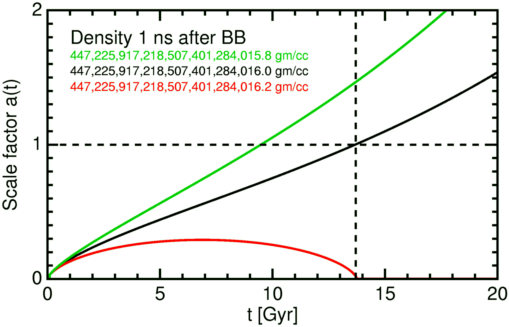
Just a difference of less than one part in 10^24 meant the difference between our Universe as we know it today, a Universe nearly twice the size it is today, and a Universe that’s already recollapsed!
And yet, thanks to the existence of dark energy, none of these scenarios is quite right!
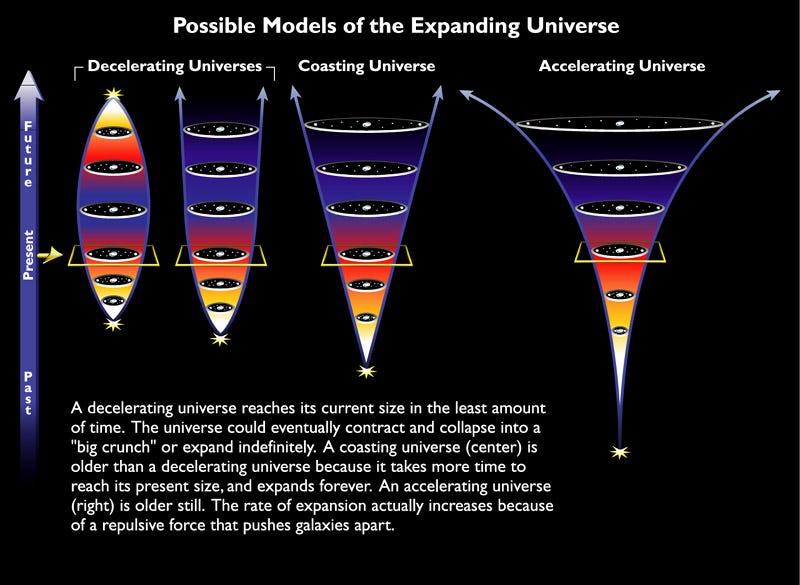
Instead of the expansion rate tending towards zero, it tends towards a small but finite value!
This is a very, very big deal, because it accelerates the arrival of our icy fate! Instead of the expansion rate dropping farther and farther as the Universe continues to expand, it remains significant, so that when twice as much time passes, something is twice as far away; when three times as much time passes, it’s four times as far away; when four times as much time passes, it’s eight times as far away, and so on!
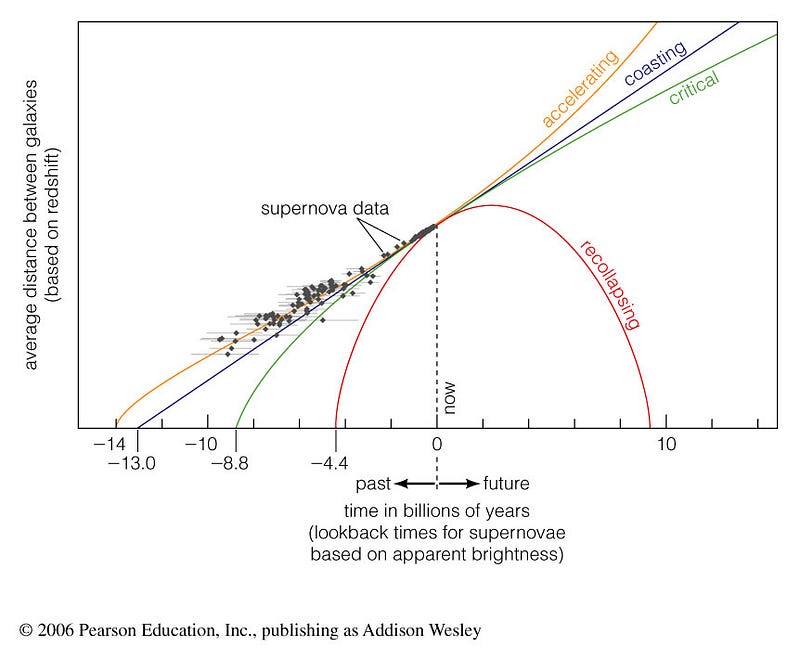
You might not be able to tell from the graph above, but the distance between galaxies starts to increase exponentially, by the amounts we’ve outlined above. This means that any single galaxy that isn’t gravitationally bound to us now — including all the large galaxy clusters in the Universe and pretty much everything beyond our little local group of galaxies — is going to accelerate away from us over time.
Instead of distant objects continuing to move away from us but at an ever-slower rate, they move away faster and faster as time goes on, which is why we call it an accelerating Universe! Note that this is the case even though the expansion rate itself isn’t increasing; it’s simply not continuing to decrease, which is what all the old “decelerating” assumptions were based on!
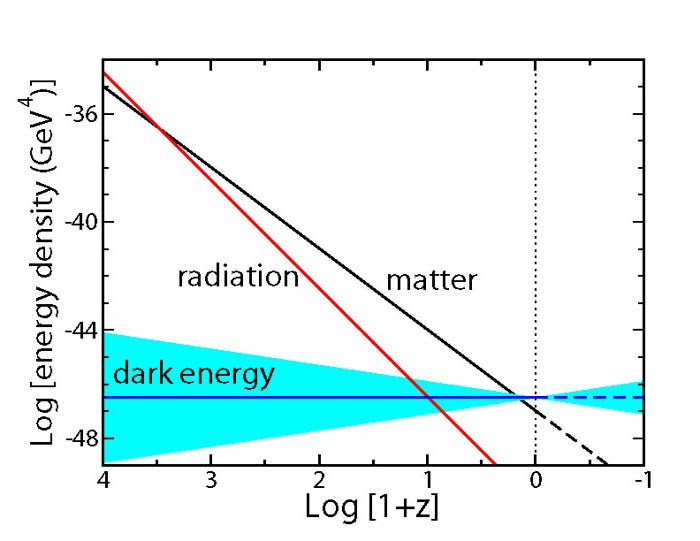
And it’s all because of what dark energy is: an energy intrinsic to space itself! Unlike matter and radiation that dilute as the Universe expands, dark energy is equivalent to a cosmological constant because the energy density remains constant, even as the Universe continues to expand!
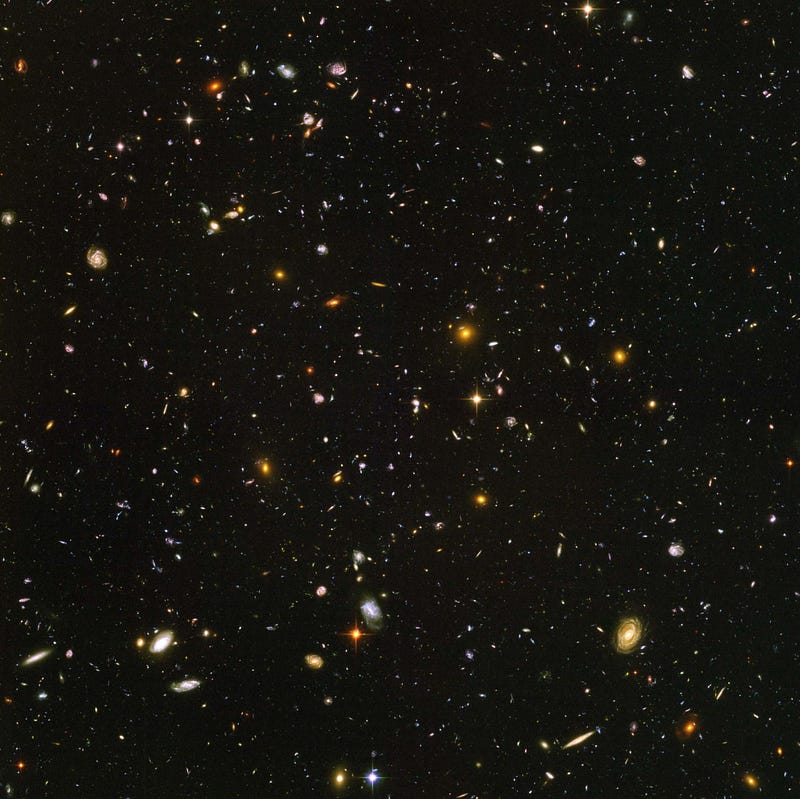
So the Universe isn’t just going to end in ice; it’s going to end in ice in the fastest way possible! Every galaxy in the image above will disappear from our Universe, and a great many of them are already unable to be reached by us, even if we could somehow travel at the speed of light! And still, that’s a really, really long way away, and there are a huge number of interesting things that are going to happen for a long time to come.
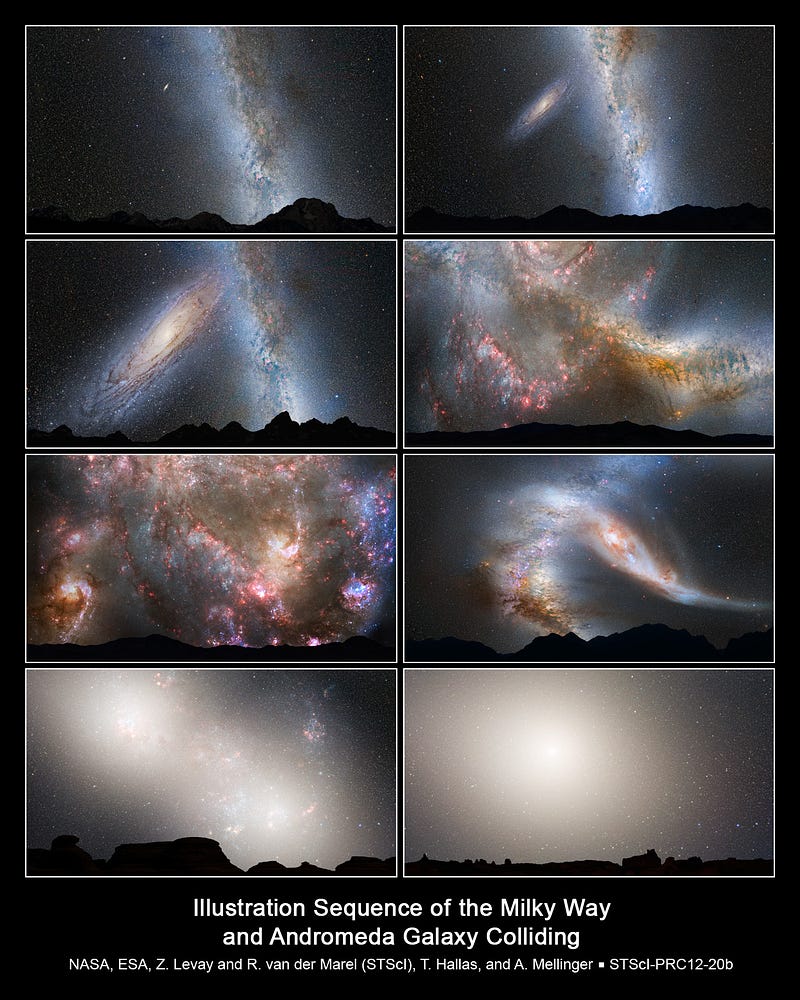
With the entire local group bound to us — more than a trillion stars’ worth and even more in planets, gas and dark matter — we’ve got a spectacular future to look forward to. But in short order, the local group is all there will be. Even now, because of the accelerated expansion, 97% of the galaxies in the part of the Universe observable to us are already unreachable, even at the speed of light.
So as far as ending in ice? Its destruction is also great, and will suffice.
Leave your comments at the Starts With A Bang forum on Scienceblogs!





